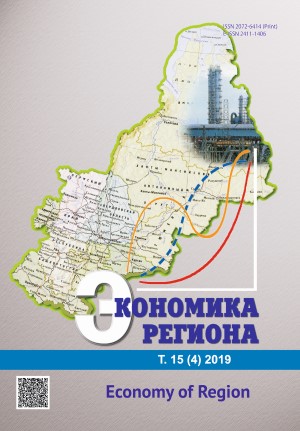МОДЕЛИРОВАНИЕ ПЕРСПЕКТИВНЫХ ТОРГОВО-ТРАНСПОРТНЫХ КОРИДОРОВ В РАМКАХ ПРОЕКТА «ОДИН ПОЯС — ОДИН ПУТЬ»
Simulation of the Prospective Trade and Transport Corridors within the Framework of the “One Belt, One Road” Project
Author(s): Askar Akaevich Akaev, Artemy Sergeevich Malkov, Olga Igorevna Davydova, Sergey Georgievich ShulginSubject(s): Economy
Published by: Институт экономики Уральского отделения Российской академии наук
Keywords: trade flows; transport corridors; spatial simulation; world trade; High-Speed Railways
Summary/Abstract: The rapid growth of trade between Asia and Europe facilitated the revival of the Great Silk Road that used to be one of the main trade routes. The new Silk Road can pass through the territory of several states, contributing to their economic growth. The exact route of the new Silk Road is yet to be defined, as there are several alternative options. We developed a mathematical model based on the thermal conductivity equation, which is widely used in physics. Our model assesses how Trans-Eurasian transport flows will change in case of implementing a particular route variant of the Chinese project “One belt, One road” (taking into account the modernisation of the Russian railway network). Based on the spatial distribution of the goods’ supply and demand, this spatial model simulates and predicts the flow of goods in a particular geographical area. The model uses correlations linking the characteristics of commodity flows and the spatial distribution of prices in the considered territory. We have presented results of calculations for several scenarios of modernisation, including the inertial scenario, which maintains the current scheme of transportation of goods. Moreover, we have examined a scenario, involving the construction of the high- speed Northern corridor of the Trans-Asian railway, including the high-speed line Moscow-Kazan-Ekaterinburg-Kazakhstan-Urumqi, as well as a scenario in which the Silk Road passes through Kazakhstan. The simulations have shown that creation of a high-speed highway from Vladivostok to the Russian Western border is the most favourable scenario for implementing Russia’s transit opportunities and accelerating its economic growth. The simulations’ results can be used for assessing the effectiveness of infrastructure projects aimed at modernisation of the Russian transport network.
Journal: Экономика региона
- Issue Year: 15/2019
- Issue No: 4
- Page Range: 981-995
- Page Count: 14
- Language: Russian

